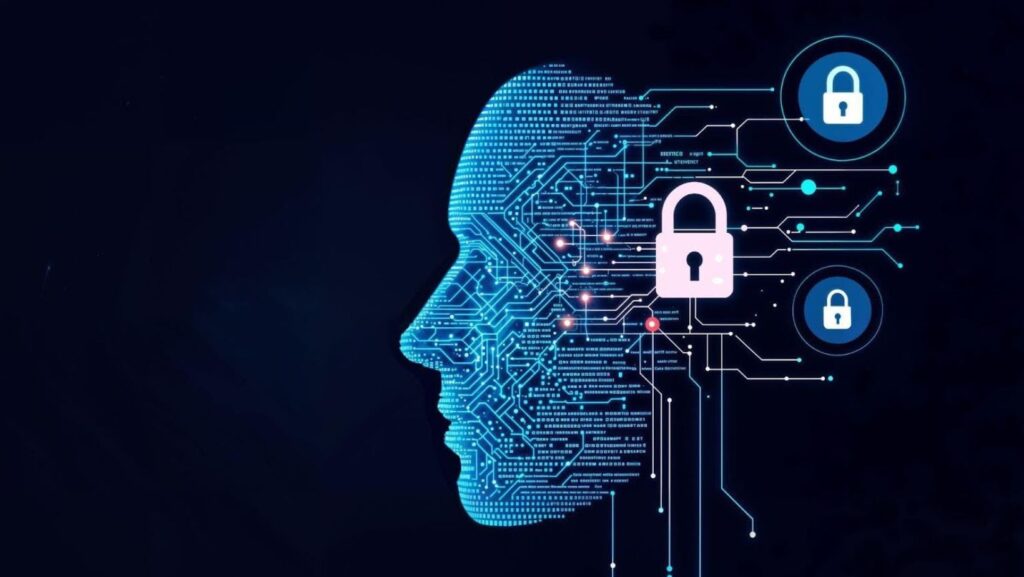Cybersecurity faces a strange paradox. Budgets keep increasing, yet attacks continue to rise, and skilled professionals are getting harder to find.
Across industries, enterprises now manage wider attack surfaces:
- Remote work setups
- Cloud-based applications
- IoT devices
- Distributed teams and vendors
With limited human resources, traditional defenses can’t keep up. That’s where AI-powered cybersecurity changes the equation.
Artificial intelligence acts as a force multiplier, allowing cybersecurity teams to scale their effectiveness without scaling headcount. This shift marks a new era, moving from manual, time-heavy operations to intelligent automation that amplifies human expertise.
AI isn’t replacing people; it’s helping them do more, faster, and smarter.
The Reality of Stretched Resources
| Challenge | Impact on Enterprises |
| Talent shortage | Longer response times, growing risk exposure |
| Expanding attack surfaces | More alerts, more noise, less focus |
| Budget pressure | Need for measurable ROI and efficiency |
Security operations centers face a simple problem. Too many alerts. Too few people. Not enough hours in the day.
The global shortage of cybersecurity professionals remains severe. According to the World Economic Forum, about four million workers are needed worldwide.
The average SOC analyst receives over 4,000 alerts daily. Most are false positives. But you can’t ignore them because buried in that noise might be a real threat. So teams spend hours investigating alerts that lead nowhere.
This creates a vicious cycle. Analysts burn out from the tedium. They leave for other jobs.
Companies struggle to replace them because skilled security professionals are expensive and hard to find. The remaining team members take on more work. The cycle repeats.
Budget conversations make this worse. CFOs want to know why security costs keep rising while breaches still happen. They push for efficiency.
But traditional security operations don’t scale efficiently. Adding 50% more network traffic usually means hiring 50% more analysts.
How AI Transforms Security Operations
AI fundamentally changes how enterprises detect, respond to, and even predict cyber threats. An AI powered cybersecurity framework for modern enterprises enables these capabilities through integrated threat intelligence, automation, and predictive behavioral analytics.
Below are four key transformation areas.
A. Intelligent Threat Detection and Response
AI uses machine learning (ML) to analyze millions of data points in real time. It learns what “normal” looks like and flags unusual behavior that may indicate an attack.
Key advantages include:
- Detecting zero-day threats faster
- Correlating events across multiple environments (cloud, endpoints, network)
- Reducing false positives
This happens in real time. The AI doesn’t get tired or distracted. It doesn’t need coffee breaks. When it flags something suspicious, it includes context about why the alert matters. Your analysts spend time investigating real threats instead of chasing false alarms.
B. Automated Security Operations
AI doesn’t just detect; it also acts.
Many security incidents follow predictable patterns. A user clicks a phishing link. Their credentials get compromised. The AI detects the unusual login location.
In traditional operations, an analyst would investigate, confirm the threat, reset the password, and notify the user.
AI automates this entire workflow. It recognizes the pattern, takes the response actions, and documents everything. Your team reviews the incident later, but the immediate threat is already contained. Response times drop from hours to minutes.
Automation can handle:
- Alert triage and prioritization
- Threat enrichment with external intelligence
- Orchestration of incident response workflows
Some AI systems now offer self-healing capabilities, automatically isolating infected devices or closing vulnerabilities. This frees human analysts from repetitive tasks, allowing them to focus on higher-value work like threat hunting and strategic planning.
C. Predictive Security Intelligence
AI brings a proactive edge. Instead of reacting after a breach, it helps predict what might happen next.
Predictive capability can:
- Forecast cyberattacks for patterns and likely targets
- Rank vulnerabilities based on risk exposure
- Identify high-value assets that need stronger defenses
Your team can patch critical vulnerabilities before they’re exploited. You can strengthen defenses in weak areas before attackers probe them. This shifts security from reactive firefighting to proactive defense.
D. Enhanced Decision Support
AI technology acts as an assistant, offering contextual recommendations during investigations. Natural-language interfaces make complex AI tools accessible to junior analysts.
This cybersecurity strategy levels the playing field inside SOCs:
- Less-experienced staff get guided insights
- Training time shortens
- Team productivity increases
In short, AI becomes the mentor and multiplier for security teams.
Quantifiable Benefits: The ROI of AI in Cybersecurity
| Benefit Area | Traditional Security | With AI-Powered Systems |
| Detection speed | Days or weeks | Minutes or hours |
| Manual effort | High | Reduced by 50%+ |
| False positives | Frequent | Significantly lower |
| Staffing needs | Grows with emerging threats | Scales efficiently |
1. Operational Efficiency Gains
AI streamlines investigations and cuts manual work in half. It reduces false positives, increases analyst throughput, and drives faster containment.
Average metrics:
- Manual investigation time ↓ by 50–70 %
- Mean time to respond (MTTR) ↓ from days to hours
- Analysts handle more cases with the same headcount

These results translate into stronger defenses and happier teams.
2. Cost Optimization
AI lets enterprises grow securely without expanding staff. It also cuts costs by detecting and containing security breach incidences faster.
The average global data breach costs USD 4.45 million (IBM 2025). AI-driven detection can reduce this figure significantly by shortening response time and limiting damage.
Additionally, better automation improves tool utilization, reducing waste and licensing overhead.
3. Enhanced Security Outcomes
AI strengthens protection across all environments:
- Higher detection accuracy for sophisticated attacks
- Uniform policies across cloud, on-premises, and remote setups
- Improved compliance and audit readiness
Artificial intelligence delivers consistent protection at scale, something traditional methods struggle to achieve.
4. Strategic Resource Reallocation
When automation handles the repetitive work, security leaders can redirect resources to areas that move the business forward:
- Strategic risk management and assessments
- Infrastructure hardening
- Threat intelligence research
This not only boosts performance but also raises employee satisfaction, analysts spend more time doing meaningful work rather than endless alert reviews.
Implementation Best Practices
Adopting AI doesn’t require a full overhaul. The smartest approach is to start small, scale fast, and stay human-centric.
High-Impact Use Cases
Focus first on processes that deliver measurable gains:
- Alert Triage Makes Sense First
Most teams begin with AI-powered alert triage. The technology is mature. The benefits are immediate. You’ll see reduced alert fatigue within weeks.
- Threat Intelligence Correlation Comes Next
AI can connect dots across multiple threat feeds and internal data sources. It identifies relationships that humans miss because the data volume is too large. This helps your cybersecurity operations team understand the bigger picture of hidden threats targeting your organization.
- Vulnerability Management Benefits from AI
Not all vulnerabilities pose equal risk. AI considers your specific environment, available exploits, and threat actor behavior. It tells you which vulnerabilities to patch first based on actual risk, not just severity scores.
Quick wins build internal confidence and support broader adoption.
Ensure Human-AI Collaboration
Artificial intelligence handles tasks. Humans make decisions. This distinction matters.
The AI enriches alerts and recommends actions. Your analysts review those recommendations and decide what to do.
For critical decisions, like blocking a major business application or isolating a server, human judgment remains essential. This approach builds trust.
Your team sees how the AI reaches conclusions. They can override decisions when context requires it. Over time, as confidence grows, you can automate more routine responses while keeping human oversight for complex situations.
Data Quality and Integration
Cybersecurity AI performance essentially depends on the quality and diversity of sensitive data it analyzes. Feed it with logs, endpoint signals, and network traffic from all major systems.
Break down silos between the security tool; integrate SIEM, EDR, and identity systems.
Finally, train and refine models continuously to adapt to evolving cyber security threats.
Moving Forward
AI driven cybersecurity isn’t coming. It’s already here. Your competitors are already using it. Threat actors definitely are.
The question isn’t whether to adopt AI security. It’s how quickly you can implement cybersecurity capabilities effectively.
The math is straightforward. Cyber threat is growing exponentially. Budget is growing linearly. Hiring skilled analysts gets harder every year.
AI lets you break out of this trap. Your team can protect more assets, investigate more potential threats, and respond faster without proportionally increasing headcount. You do more with what you have.
Start small. Pick one use case. Measure results. Expand from there.
The technology works. The ROI is real. Your security team will thank you for giving them tools that make their jobs more manageable and more impactful.
The enterprises that thrive in the coming years will be those that learned to combine human expertise with AI capabilities. Not because it’s innovative. But because it is necessary.


